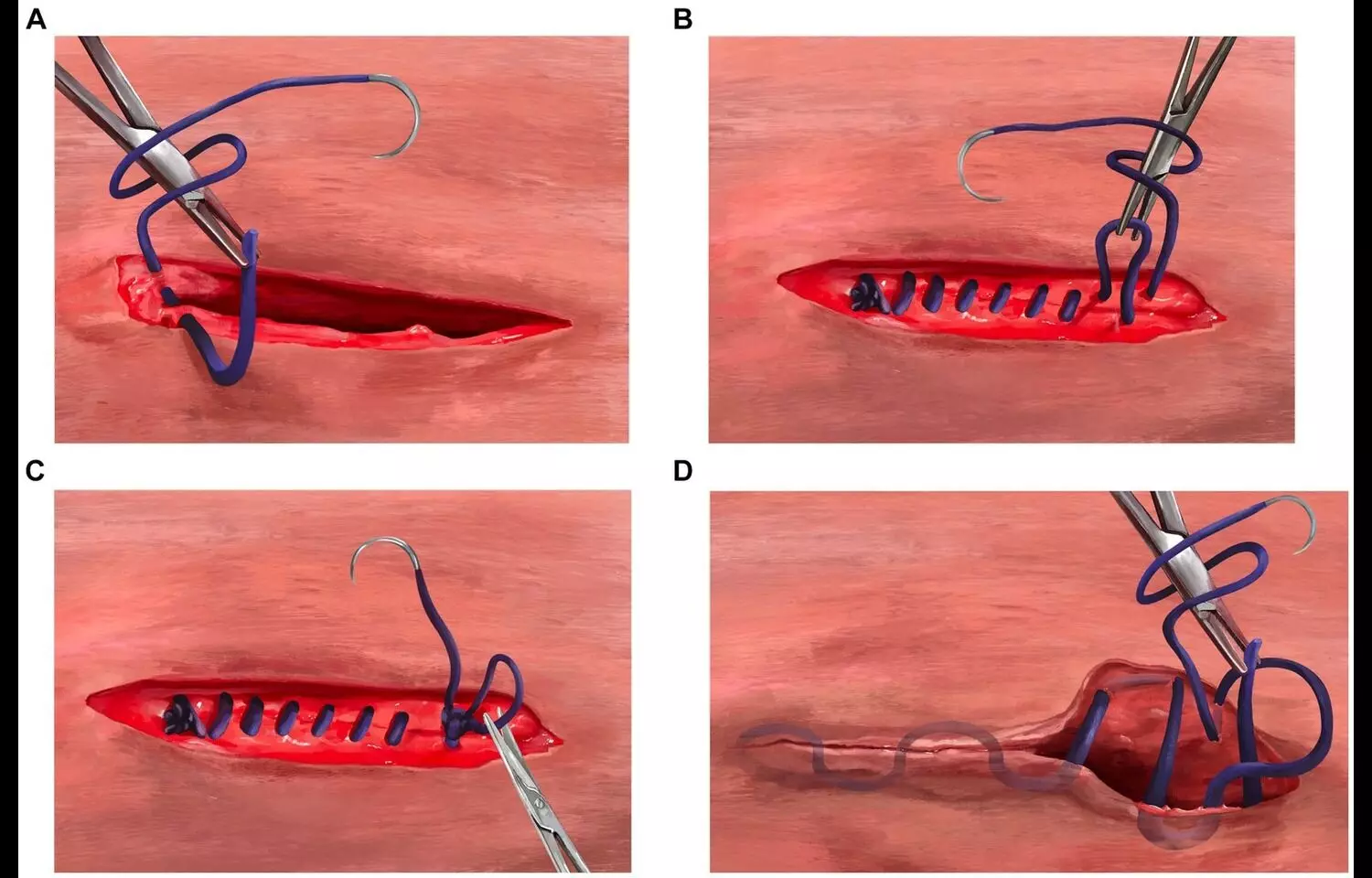Barbed Sutures Improve Laparoscopic Tubal Anastomosis Outcomes, suggests study

Researchers have found in a new study that use of barbed sutures in laparoscopic tubal anastomosis is associated with shorter operation times and improved reproductive outcomes compared to conventional sutures.
This study aimed to compare reproductive outcomes after laparoscopic tubal anastomosis using conventional (non-barbed) and barbed sutures. This retrospective cohort study was conducted at a single center between January 2016 and December 2021.
Thirty-nine women undergoing laparoscopic tubal anastomosis were divided into two groups: a non-barbed suture (5 − 0 polyglactin suture) group (16 women), and a barbed suture (5 − 0 unidirectional barbed suture) group (23 women). Demographic data, operation times, reversal operation success rates, pregnancy rates, and other factors were compared between the two groups.
Results: The mean operation time was significantly shorter in the barbed suture group (55.8 ± 7.33 min) than in the non-barbed suture group (108.7 ± 17.27 min) (p = 0.001). The overall pregnancy rate was significantly higher in the barbed suture group (87%) than in the non-barbed suture group (56.3%) (p = 0.037). The rate of intrauterine pregnancy was also significantly higher in the barbed suture group (p = 0.041). The intervals between surgery and pregnancy did not differ significantly between the two groups.
The use of barbed sutures in laparoscopic tubal anastomosis can result in shorter operation times and better reproductive outcomes than the use of conventional sutures.
Reference:
Karadag, C., Karadag, B. Comparison of reproductive outcomes after laparoscopic tubal anastomosis using conventional (non-barbed) sutures and barbed sutures. BMC Surg 25, 301 (2025). https://doi.org/10.1186/s12893-025-03043-z



